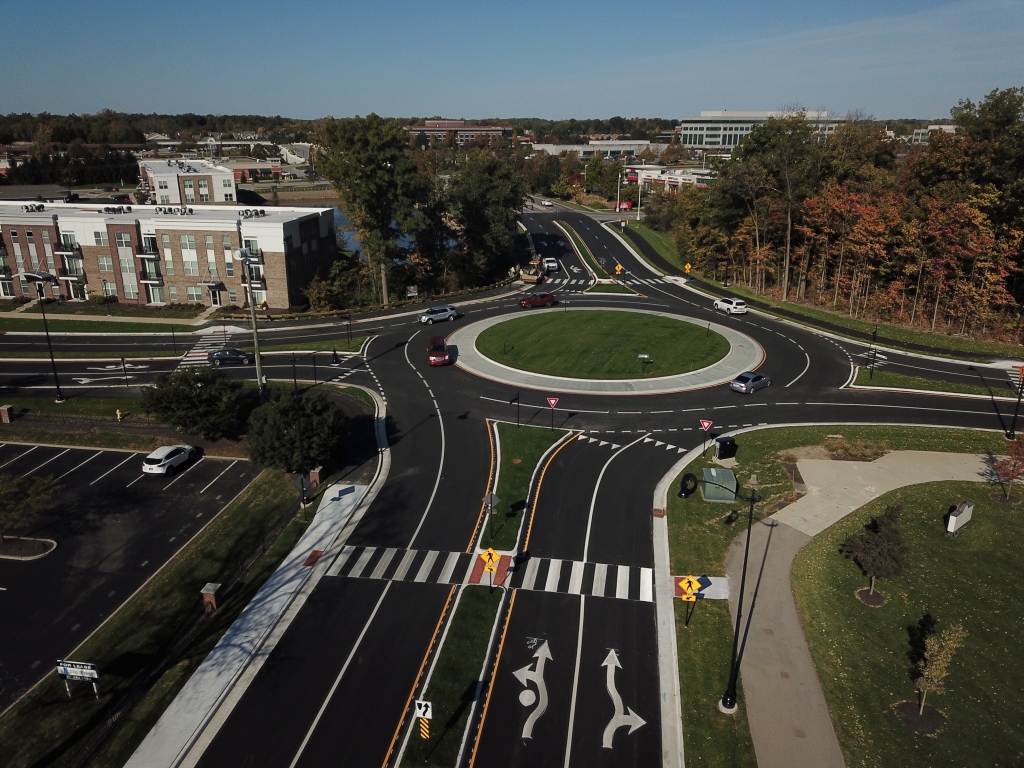In 1996, Carmel had a population of 30,000 and experienced 217 traffic accidents. Now, in 2019 and 120+ roundabouts later, there are approximately 100,000 residents and there have been fewer than 200 traffic accidents. The improved traffic safety has translated to safer conditions for road cyclists and pedestrians. Over the last 20+ years, the city engineer’s office has determined that roundabouts cost $250,000 less than signalized intersections to build and save more than $5,000 per intersection in electricity costs. Since traffic moves more efficiently with roundabouts, cities will be less likely to have to add lanes in the future—which can also generate monetary savings as Carmel’s roundabouts cost between $1.0-1.5M each on average and it can cost $7-10M per mile for additional road lanes. Maintenance of the roundabouts is also much simpler and cheaper as there is no longer a need to maintain the signal, route electricity, install equipment, or provide labor to check on the signal. The roundabouts have also proven easier and more efficient to plow during snowstorms.
The City has also quantified fuel savings and developed systems of receiving feedback on travel time changes for the roundabouts implemented. Carmel has determined that due to the elimination of traffic jams and associated engine idling, each roundabout achieves approximately 24,000 gallons of gas per year in savings. With more than 120 roundabouts at an average of $2.50 per gallon, this equates to more than $7,200,000 in savings per year. Large climate change and local air quality emissions savings are also realized—transportation emissions are one of the largest sources of nitrogen dioxide, which is linked to airway inflammation and respiratory symptoms in asthmatics. Finally, roundabouts have allowed Carmel to shrink their overall transportation infrastructure footprint and not buy as much property—this ensures that less land is developed and fewer resources are utilized overall. Carmel’s efforts have acted as a model and proof to the state, which has recently begun to incorporate roundabouts in other areas in Indiana through the state highway department.
Challenges
Too often traffic and pedestrian corridors are being designed for the worst-case scenario. When this hyper-conservative approach is adopted, cities often make corridors too big, which allows for higher speed. Using roundabouts, cities can create smaller, safer intersections with narrower lanes, which can also better support the introduction of landscaping, more permeable surfaces to help prevent flooding, and multi-use paths for pedestrians and cyclists.
To achieve these outcomes, cities want to ensure that roundabouts are prioritized and implemented in the highest need locations as well as in areas where the project will be successful. This can be challenging, so in order to make projects happen managers will want to get early buy-in from all levels of government involved.
Recommendations
The project manager recommended that cities begin with the intersections experiencing the greatest safety problems or with a high traffic corridor. This will ensure that the safety, traffic, and cost benefits can be experienced in the areas with the most need and along the corridor where ripple effects can have big impacts. If roundabouts are implemented throughout an entire corridor, the average cost per accident will go down and traffic will decrease more quickly. Though if he had to do it all over again, the project manager said he would want to be more aware of the fact that roundabout construction has the possibility to invite more traffic inflow since the roundabouts function so well. Overall, the project manager stated that he does not see himself recommending a traffic signal anywhere in the city because the benefits of roundabouts are plentiful and proven. Sometimes adding capacity (i.e. lanes) can make sense, but with roundabouts and improved traffic conditions, the project manager encourages zooming out to consider the big picture mobility plan for the city and really thinking things through. Please see below for some walkable communities planning information and tools.



